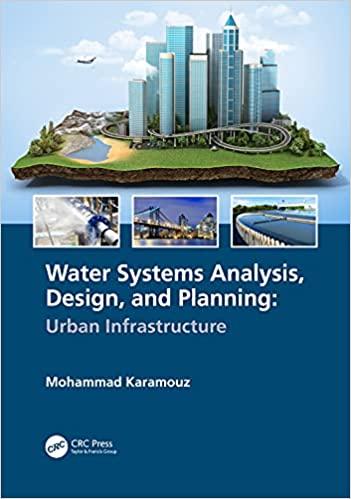Using the data given in Problem 7, map the two interacting sectors of the Business Structures and
Question:
Using the data given in Problem 7, map the two interacting sectors of the “Business Structures” and the “Population” in an objective-oriented model/software.
Data from problem 7 Based on Problems 5 and 6, formulate a simple model to explain growth and stagnation in an urban area using an objective-oriented model/software based on the following data assumed for the urban area:
In spite of dynamics considered in Problem 5, the rate of “In Migration” is also a product of “Population” and several other factors.
The “In Migration Normal” of 8% is the fraction of the “Population” that migrates into the city each year in normal conditions. The “Job Attractiveness Multiplier” depends on “Labor Availability.” When there are many available jobs (“Labor Availability” is less than 1 because “Labor Force” is smaller than “Jobs”), the “Job Attractiveness Multiplier”
increases to values greater than 1. Then people are inclined to move to the city. When available jobs are scarce (“Labor Availability” is greater than 1 because “Labor Force” is greater than “Jobs”), the “Job Attractiveness Multiplier” decreases to values between 0 and 1. Then people will not migrate to the city.
Data from problem 5 Formulate a population growth model in an urban area using an objective-oriented model/
software based on the following data:
• The initial value of “Population” is 50,000 people. “Population” increases at the rates of “Births” and “In Migration” and decreases at the rates of “Deaths” and “Out Migration.”
• The rate of “Births” is ~1.5% per year. The rate of “Deaths” is also a constant percentage of the “Population.” The “Average Lifetime” of a person is assumed as 67 years.
The rate of “Out Migration” is equal to 8% of the initial “Population.”
Data from problem 6 Develop an urban growth model by considering the dynamics of population and business growth within a fixed area of a city based on the following assumptions. The model should contain two sectors: the “Business Structures” and the “Population” sectors.
A city’s life cycle is characterized by a period of economic growth followed by a period of transition towards equilibrium. During the growth period, the city appears to be economically healthy: business activity is expanding and unemployment is low. The “Population” and the number of “Business Structures” grow quickly. During the transition period, conditions become less desirable and pressures arise which impede further growth. The “Construction” rate of “Business Structures” becomes smaller and so does the rate of “In Migration” into the city. In equilibrium, when the “Population” and the number of “Business Structures” stop growing, the city suffers from problems such as high unemployment.
The availability of “Jobs” and promise of higher incomes are the prime motivations for “In Migration” into an urban area. People tend to move to areas where employment opportunities are favorable. People tend to migrate to cities that, at a given time, are perceived to offer more job opportunities.
When people move into or out of an area, they add to or subtract from the number of people in the area’s “Labor Force.” Businesses cannot ignore the “Labor Availability” in their location and expansion decisions. Readily available labor allows businesses greater flexibility in choosing employees and shortens the time necessary to fill open positions.
Moreover, high “Labor Availability” tends to decrease wage competition for labor among businesses.
Step by Step Answer:

Water Systems Analysis Design, And Planning Urban Infrastructure
ISBN: 9780367528454
1st Edition
Authors: Mohammad Karamouz





